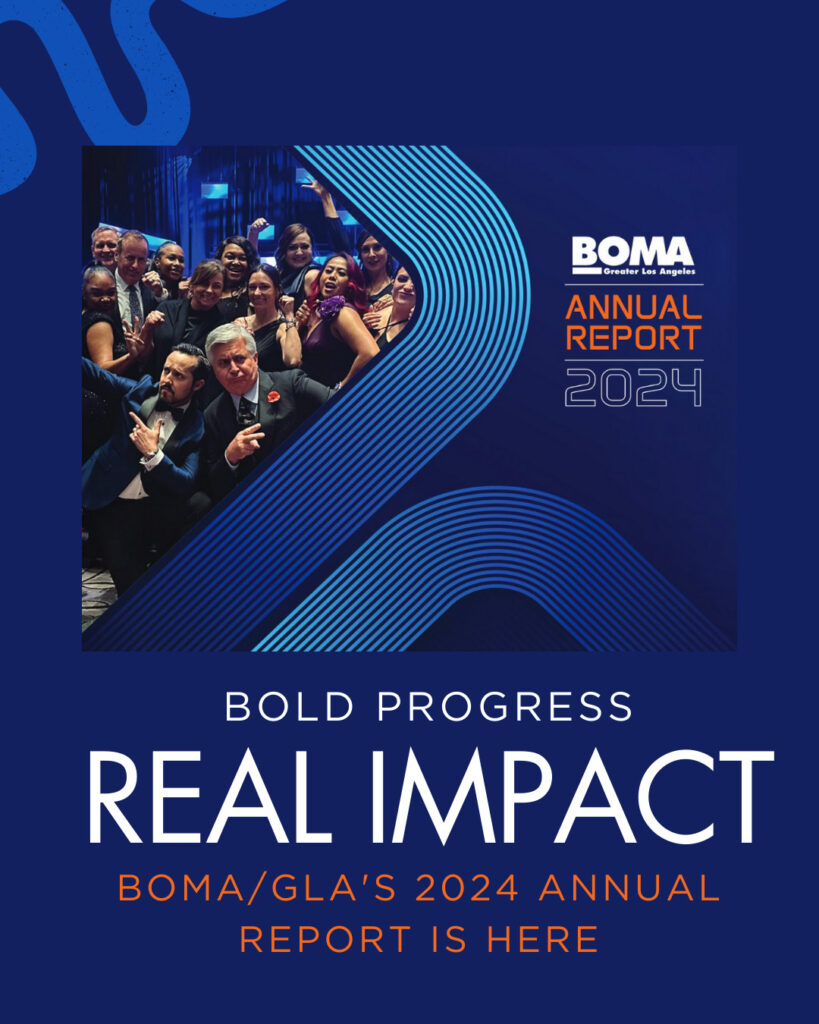How DTLA’s 2025 Trends Impact CRE Operations, Leasing, and Strategy

Downtown LA Alliance's Q3 2025 market report shows that while major civic investments and new development are reshaping the market, commercial real estate continues to face regulatory, economic, and operational pressures.
Understanding these shifts is critical as BOMA/GLA continues advocating for policies that protect property owners and ensure a competitive business environment.
What You Need to Know
- LA City Council approved the $2.6B Convention Center expansion.
- DTLA is seeing large-scale residential growth, with more than 1,481 units under construction and 29,000 proposed.
- Office vacancy remains high at 30.9%, and properties are selling at steep discounts, such as PacMutual’s $48.5M sale.
- Hotel occupancy sits at 70.9%, and over 1,200 rooms are under construction—positioning the hospitality market for stronger convention and event activity.
How It Impacts You
Opportunities for BOMA/GLA Members
More visitors and density can strengthen commercial property performance.
For example, there is hope that the Convention Center expansion and ongoing residential pipeline will increase foot traffic, support neighborhood retail, and create a stronger customer base for office and mixed-use properties.
Flight-to-quality leasing trends benefit upgraded buildings.
Owners investing in modernization, amenities, and building systems are best positioned to attract major tenants following the recent KPMG and Banc of California leases.
Retail diversification creates new leasing pathways.
With experiential tenants like Ballers LA replacing traditional anchors, properties have opportunities to reposition vacant retail into active, community-serving uses that drive daily traffic.
Hospitality growth supports surrounding assets.
New hotel rooms and rising RevPAR increase demand for parking, meeting space, and local retail—directly benefiting properties within walking distance of event and entertainment districts.
Risks to Monitor
Persistently high office vacancy pressures building valuations and operating income.
Discounted sales, like PacMutual’s, indicate continued downward pressure on asset value—something BOMA/GLA is watching closely as policymakers discuss new taxes or mandates on commercial buildings.
Construction activity may strain street access and operations.
With more than 20 projects under construction, members may face prolonged impacts to mobility, loading, and pedestrian access—requiring coordination with the City and advocacy on mitigation.
Retail vacancy remains elevated due to changing consumer patterns.
A shift away from traditional retail could leave older layouts or large-format spaces harder to activate without zoning flexibility or adaptive reuse support.
Policy headwinds remain strong.
As the City explores new revenue streams, sustainability mandates, and tenant protections, high vacancy and lower property income could make commercial buildings more vulnerable to cost pressures—an area where BOMA/GLA continues to lead advocacy efforts.
Stay Connected
Engaging with City and County elected leaders remains our top priority to help members navigate market shifts and prevent harmful policies.
For example, defending against any new taxes or fees on commercial properties, which would further strain assets already challenged by high vacancy and declining valuations.
Follow BOMA on the Frontline for more news impacting members.


